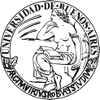Publications
-
Transformed soybean (Glycine max) roots as a tool for the study of the arbuscular mycorrhizal symbiosis
World Journal of Microbiology and Biotechnology (2009) 25(10): 1857-1863
Ri T-DNA transformed roots have been used effectively in studying the interaction between various plant hosts and arbuscular mycorrhizal (AM) fungi. We investigated the in vitro monoxenic symbiosis between the AM fungus Glomus intraradices and transformed soybean roots (TSRs). Comparisons were made between TSR system and plants of the same genotype. The extraradical fungal structures generated in vitro culture showed normal development. Straight runner hyphae branched into short simple branched absorbing structures and spores were initiated. AM symbiosis was confirmed by the presence of arbuscules and vesicles in cortical cells of the TSRs. The frequency of intraradical colonization in TSRs was higher than in plants grown in soil, whereas the intensity values of intraradical colonization in TSR cultures were similar to those in whole plants. These results show that TSR cultures were able to support the growth and characteristic development of G. intraradices.
-
Mycorrhizal status of plant species in the Chaco Serrano Woodland from central Argentina
Mycorrhiza 19(3): 205-214
We examined the mycorrhizal type of 128 plant species in two patches of native vegetation of the Chaco Serrano Woodland, central Argentina, the largest dry forest area in South America. Of the 128 plant species investigated (belonging to 111 genera in 53 families), 114 were colonized by arbuscular mycorrhizal fungi (AM), orchid mycorrhizal associations were present in the five terrestrial orchid species analyzed, one ectomycorrhiza was only present in Salix humboldtiana Willd., and 96 harbored a dark septate endophyte (DSE) association. Co-occurrence of AM and DSE was observed in 88 plant species. We determine morphological types of arbuscular mycorrhizal fungi (Arum, Paris, and intermediate AM structures) and report the mycorrhizal status in 106 new species, 12 of which are endemic to central Argentina and two, Aa achalensis Schltr. and Buddleja cordobensis Griseb., are declared to be vulnerable species. Root colonization in the Chaco Serrano Woodland is widespread and should be considered in revegetation programs due to the deterioration of this particular ecosystem. Considering the predominance of AM and DSE associations and the various potential benefits that these associations may bring to plant establishment, they should receive special attention in conservation and reforestation of these woodlands.
-
A simple method to obtain endophytic microorganism from field collected roots
Soil Biology and Biochemistry 40(5):1259–1263
We describe a simple technique for obtaining endophytic microorganisms from field-collected roots. Roots of plant species were surfaced-sterilized, cut into pieces, and then each root piece was transferred to drops of Gel-Gro medium. The number of segments with bacteria and fungi was quantified and those with bacteria and dark septate endophytic (DSE) fungi were plated onto tryptic soy agar (TSA) and malt extract agar (MEA), respectively. When arbuscular mycorrhizal fungi (AMF) grew from root segments, they were inoculated into Ri T-DNA-transformed carrot root cultures. Eight different species of bacteria and five dark septate endophytes were isolated. Thirty AMF isolates were identified and continuous pure cultures established. This easy and inexpensive approach allowed us to culture various endophytic microorganisms in an in vitro system saving time and space.



